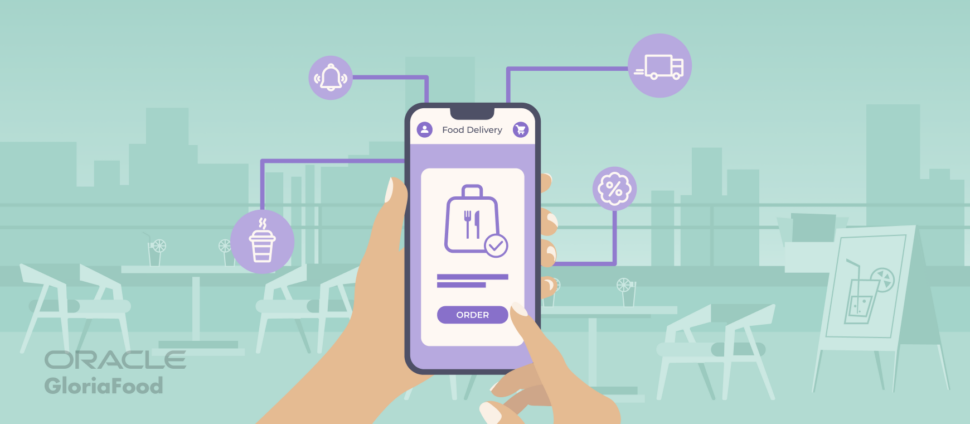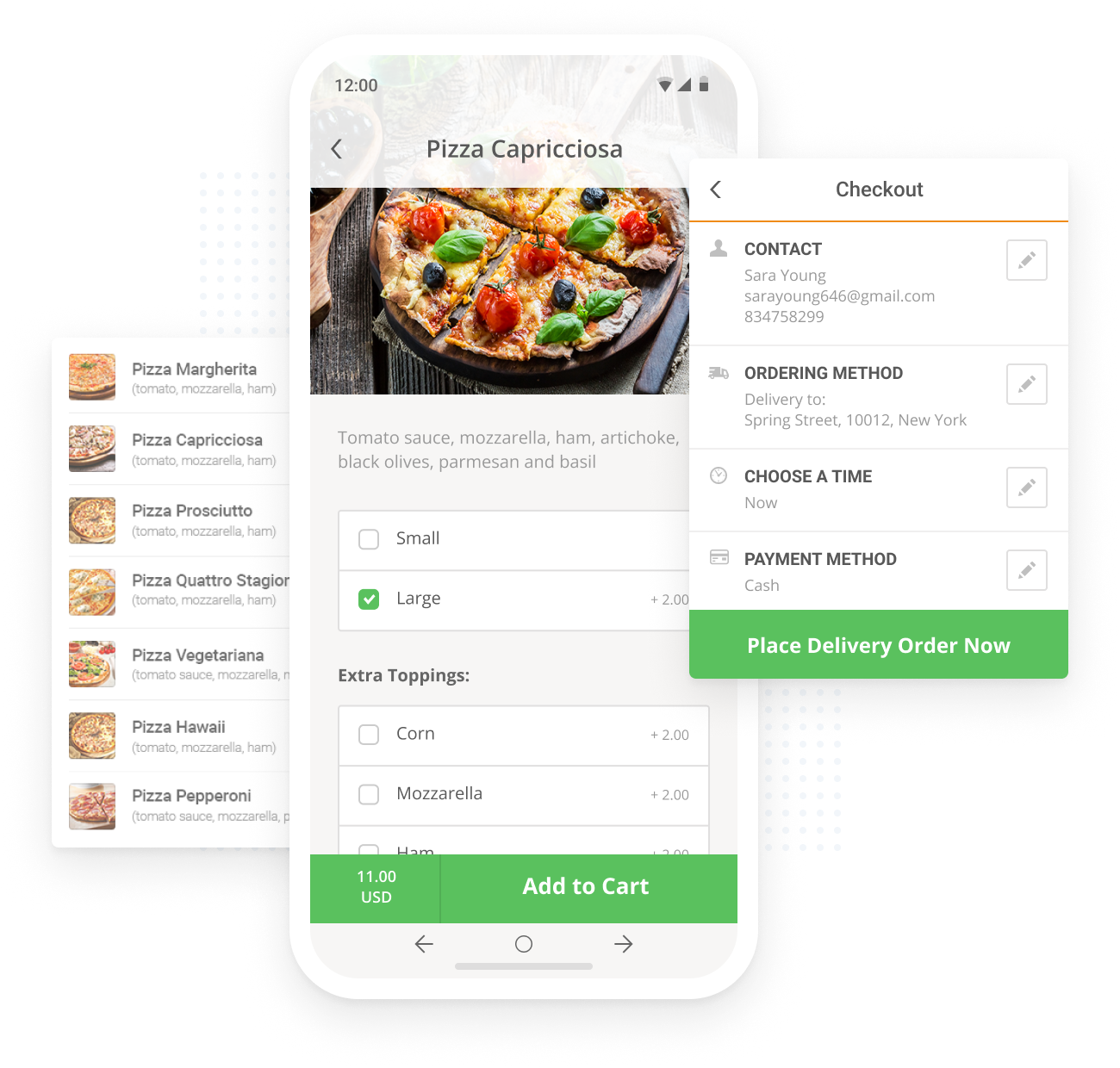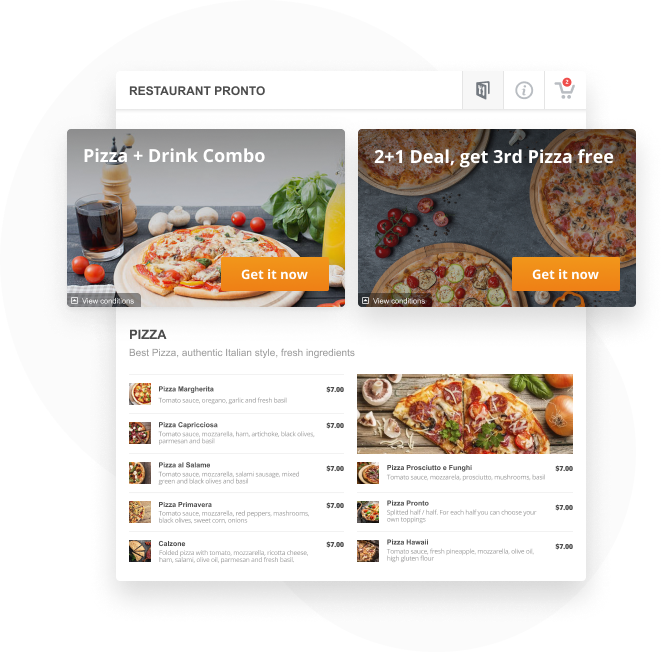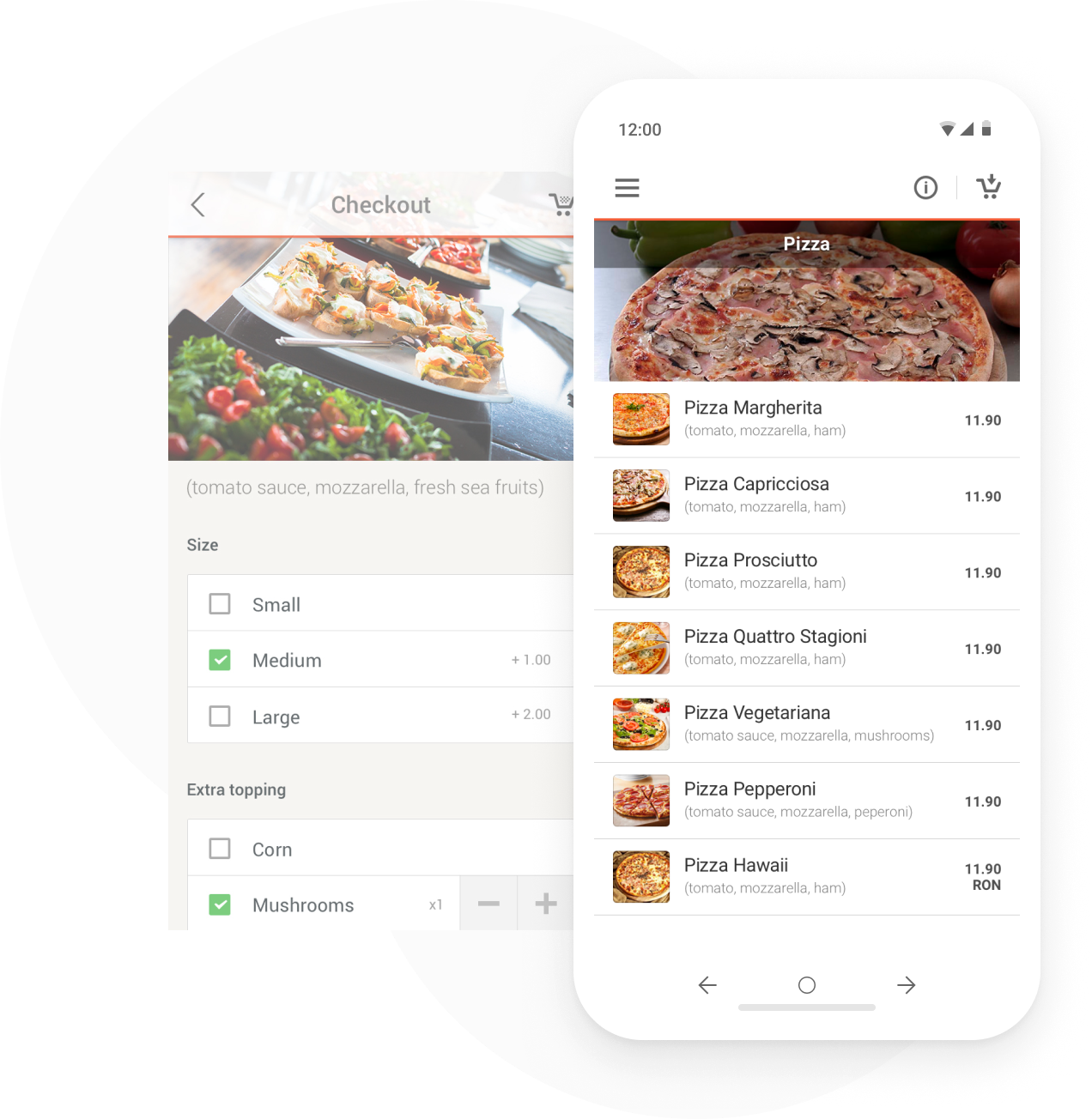Do you want to offer clients an easier way to place orders? Do you want to boost your brand recognition and increase your sales? Get a restaurant mobile app.
The mobile restaurant app makes it easier for restaurants to enhance their reputation, revenue, and customer loyalty. In this article, you will find the keyrestaurant app features you need to ensure your investment will bring you the desired results:
What is a restaurant mobile app?
A restaurant mobile app is a native app that clients can download on their phones just like any other app, for example, a streaming one.
The difference is that its main purpose is to allow people to order from your restaurant. As such, it is branded with your colors and slogan and only shows your menu items.
It is a tool where you can constantly update your guests about new launches, events, or promotions, and contact information.
The optimal restaurant mobile app should include the following:
- An easy-to-browse and irresistible menu
- Tempting promotions
- A simple interface that comes with an accessible and inclusive design
- A loyalty program
- A statistics module
Together, these restaurant app features will make your app more attractive and valuable to your consumers.
You might also like: Restaurant App Statistics Infographic
Benefits of mobile apps for restaurants
If you aren’t convinced you need an app for your restaurant, take a look over these persuasive benefits of mobile apps for restaurants:
- More sales: by offering clients a convenient way to order your food, you offer them an incentive to place orders more often. After all, all they have to do is click on an app they already have at their fingertips;
- Increased brand recognition: by seeing your restaurant’s name whenever they use their phone, clients will subconsciously think about your business whenever they get hungry. Moreover, if you offer them a great experience, they will recommend your place to others;
- Easy payment processing: not many people still carry cash around. If they get hungry, they want to be able to pay by card and not worry about withdrawing cash. A restaurant mobile app allows them to pay safely online.
Read more: [Infographic] The Benefits of Having a Restaurant Mobile App & How to Get One
5 Key restaurant app features
The main objective of a restaurant app is to increase client satisfaction and sales. You don’t need complicated characteristics that would distract people from the menu, you just need the following restaurant app features:
Read more: How to Boost Restaurant Sales Using a Mobile App
1. An easy-to-browse and irresistible menu
When you create a mobile app for restaurant ordering, your main priority should be to have a menu that will convince people to add a variety of menu items to the cart.
Therefore, ensure that your restaurant’s mobile app menu is:
- Organized in categories: such as mains, sides, and desserts, to make it easier for people to browse and find the dishes they are craving;
- Full of pictures: we eat with our eyes first, so your images must be so persuasive that people won’t be able to resist;
- Adorned with mouth-watering descriptions: they can be funny or informative, but, most of all, they should make people hungry;
- Equipped for customization: if you allow customers to personalize their dishes with sizes and toppings, you not only increase their satisfaction, but you also grow your profit as add-ons have a high-profit margin;
- Inclusive with allergen and nutritional information: appeal to a larger audience by listing both the allergens your dishes contain and the nutritional values.
Read more: Restaurant Menu Planning: How to Optimize Your Menu to Sell More
2. Tempting promotions
One of the main restaurant app features should be the ability to implement promotions. Offering plenty of discounts will hook prospective customers and keep current customers satisfied because they give them a reason to try your food.
You’ll reach a wider clientele if you offer discounts and deals because people don’t want to spend a fortune on a meal. Instead, someone looking for a bite to eat will gravitate toward the restaurant with plenty of special offers and promotions.
The video below will walk you through a variety of restaurant promotions you can create and publish in your restaurant app in minutes using our online ordering system.
Read more: How to Use Restaurant Promotion Templates Effectively to Boost Sales
3. A simple user interface
For a customer, there’s nothing worse than having to navigate through confusing restaurant app features to find basic information, and this is where simplicity in design comes in.
Instead, aim to create something minimalistic and easy to navigate so that your customers can use the app effortlessly.
Create a basic home screen that lists the available options, such as the menu and order now buttons.
A cleaned-up home screen will give the user options to choose from without having to scroll or search for them.
With a simple restaurant app design, the ordering process should go like this:
- Your customer will easily navigate to your order online option;
- There, they’ll click on the menu items they want to purchase, much like they would in any online shopping platform;
- When they’ve concluded adding their items, the platform will direct them to a page where they can input their payment and contact information (which they can save for future orders).
Furthermore, including first-time customer identification as one of your restaurant app features allows you to connect with first-time patrons even if they’re not physically inside the restaurant.
You can hook up the option to a chatbot or give them the option to call the restaurant directly to discuss the menu.
4. A loyalty program
There is a limited number of new clients in your area, so, if you want to remain in business long-term, you must turn as many of them into loyal customers. The easiest way to do this is to offer them rewards according to previous orders.
A restaurant mobile app will allow you to do so easily by setting up a loyalty program. For example, with the Promotions module from GloriaFood, you can reward people with different offers (discounts on the next order, free items, etc.) when they:
- Place a certain number of orders;
- Spend a certain amount of money.
Find out how you can reward loyalty by offering your app customers irresistible discounts and promotions:
Read more: How to Increase Customer Loyalty in a Restaurant
5. A statistics module
Statistics modules will help you understand your customer base’s activities and enhance your app for better results.
Statistics give you in-depth insight into the inner workings of your platform. The modules can show you what’s working well and what isn’t so you can work on addressing complications and boost your revenue.
Some statistics modules you might want to consider are Hotjar, Hotjar alternatives, or Google Firebase.
These modules provide detailed data behind the scenes about different app elements and how customers interact with the platform.
For example, if your app has a ‘contact us’ page, you can use the statistics module to see how many times customers visit and use the page.
Have you noticed that the contact page rarely gets clicks throughout your application’s lifetime? Then it might not be worth being a part of your restaurant app features. You can take it down or revamp it to make it more attractive and accessible for your users.
Read more: How to Successfully Use Restaurant Analytics to Increase Revenue
That’s all on restaurant app features
As a restaurateur, you must always be open to new technology that could better your business by increasing your sales and increasing the customer experience, like the restaurant mobile app.
We hope you enjoyed looking at some of these restaurant app features and other ideas you can implement to keep up with industry changes and boost your revenue.
This article is a guest post.




